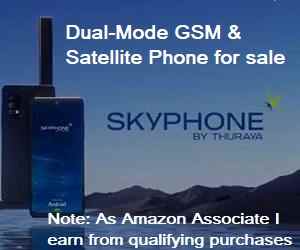Satellite Internet Forum.
Welcome, Guest. Forum rules.To search this site click here > SATSIG search
| Home Login Register |
| Satellite Internet forum › iDirect Forum: hubs and terminals › Offset Issue on Evolution Modems ! |
|
Pages: 1
|
Offset Issue on Evolution Modems !(Read 17329 times) |
|
yazzdan
Member
★★ Offline Posts: 47 |
Dec 24th, 2009 at 7:07am
|
| Back to top |
Regards,&&Syed Irfan Hasan&&iDirect & VSAT Engineer
IP Logged
|
|
Eric Johnston
Senior Member
★★★ Offline Posts: 2109 |
Reply #1 - Dec 24th, 2009 at 10:45am
|
| Back to top |
« Last Edit: Dec 24th, 2009 at 12:20pm by Eric Johnston »
IP Logged
|
|
Ex Member
Ex Member
|
Reply #2 - Dec 24th, 2009 at 9:03pm
|
| Back to top |
IP Logged
|
|
yazzdan
Member
★★ Offline Posts: 47 |
Reply #3 - Dec 30th, 2009 at 7:20am
|
| Back to top |
Regards,&&Syed Irfan Hasan&&iDirect & VSAT Engineer
IP Logged
|
|
Ex Member
Ex Member
|
Reply #4 - Dec 30th, 2009 at 12:39pm
|
| Back to top |
IP Logged
|
|
yazzdan
Member
★★ Offline Posts: 47 |
Reply #5 - Dec 31st, 2009 at 6:01am
|
| Back to top |
Regards,&&Syed Irfan Hasan&&iDirect & VSAT Engineer
IP Logged
|
|
Admin1
YaBB Admin
★★★★★ Offline Posts: 1248 |
Reply #6 - Dec 31st, 2009 at 1:31pm
|
| Back to top |
« Last Edit: Jan 5th, 2010 at 9:06am by Admin1 »
IP Logged
|
|
Ex Member
Ex Member
|
Reply #7 - Jan 1st, 2010 at 7:04pm
|
| Back to top |
« Last Edit: Jan 2nd, 2010 at 1:15pm by N/A »
IP Logged
|
|
yazzdan
Member
★★ Offline Posts: 47 |
Reply #8 - Jan 4th, 2010 at 10:35am
|
| Back to top |
« Last Edit: Jan 4th, 2010 at 11:36am by Admin1 »
Regards,&&Syed Irfan Hasan&&iDirect & VSAT Engineer
IP Logged
|
|
Ex Member
Ex Member
|
Reply #9 - Jan 4th, 2010 at 11:46am
|
| Back to top |
IP Logged
|
|
yazzdan
Member
★★ Offline Posts: 47 |
Reply #10 - Jan 5th, 2010 at 7:07am
|
| Back to top |
Regards,&&Syed Irfan Hasan&&iDirect & VSAT Engineer
IP Logged
|
|
yazzdan
Member
★★ Offline Posts: 47 |
Reply #11 - Jan 5th, 2010 at 8:12am
|
| Back to top |
Regards,&&Syed Irfan Hasan&&iDirect & VSAT Engineer
IP Logged
|
|
Ex Member
Ex Member
|
Reply #12 - Jan 5th, 2010 at 11:42am
|
| Back to top |
IP Logged
|
|
yazzdan
Member
★★ Offline Posts: 47 |
Reply #13 - Jan 5th, 2010 at 12:23pm
|
| Back to top |
Regards,&&Syed Irfan Hasan&&iDirect & VSAT Engineer
IP Logged
|
|
Eric Johnston
Senior Member
★★★ Offline Posts: 2109 |
Reply #14 - Jan 5th, 2010 at 12:39pm
|
| Back to top |
« Last Edit: Jan 5th, 2010 at 1:41pm by Eric Johnston »
IP Logged
|
|
yazzdan
Member
★★ Offline Posts: 47 |
Reply #15 - Jan 11th, 2010 at 5:04am
|
| Back to top |
Regards,&&Syed Irfan Hasan&&iDirect & VSAT Engineer
IP Logged
|
|
Adrian
Member
★★ Offline Posts: 17 |
Reply #16 - Jan 11th, 2010 at 9:24am
|
| Back to top |
IP Logged
|
|
yazzdan
Member
★★ Offline Posts: 47 |
Reply #17 - Jan 11th, 2010 at 9:49am
|
| Back to top |
Regards,&&Syed Irfan Hasan&&iDirect & VSAT Engineer
IP Logged
|
|
Eric Johnston
Senior Member
★★★ Offline Posts: 2109 |
Reply #18 - Jan 11th, 2010 at 10:32am
|
| Back to top |
IP Logged
|
|
yazzdan
Member
★★ Offline Posts: 47 |
Reply #19 - Jan 12th, 2010 at 6:14am
|
| Back to top |
Regards,&&Syed Irfan Hasan&&iDirect & VSAT Engineer
IP Logged
|
|
Eric Johnston
Senior Member
★★★ Offline Posts: 2109 |
Reply #20 - Jan 12th, 2010 at 9:51am
|
| Back to top |
IP Logged
|
|
yazzdan
Member
★★ Offline Posts: 47 |
Reply #21 - Jan 12th, 2010 at 10:03am
|
| Back to top |
Regards,&&Syed Irfan Hasan&&iDirect & VSAT Engineer
IP Logged
|
|
Adrian
Member
★★ Offline Posts: 17 |
Reply #22 - Jan 12th, 2010 at 3:28pm
|
| Back to top |
IP Logged
|
|
Eric Johnston
Senior Member
★★★ Offline Posts: 2109 |
Reply #23 - Jan 13th, 2010 at 9:27am
|
| Back to top |
IP Logged
|
|
Adrian
Member
★★ Offline Posts: 17 |
Reply #24 - Jan 13th, 2010 at 12:24pm
|
| Back to top |
IP Logged
|
|
Eric Johnston
Senior Member
★★★ Offline Posts: 2109 |
Reply #25 - Jan 13th, 2010 at 3:16pm
|
| Back to top |
IP Logged
|
|
Adrian
Member
★★ Offline Posts: 17 |
Reply #26 - Jan 14th, 2010 at 9:25am
|
| Back to top |
IP Logged
|
|
jobione
Member
★★ Offline Posts: 3 |
Reply #27 - Jun 7th, 2012 at 2:42pm
|
| Back to top |
IP Logged
|
|
Pages: 1
|
Email me: eric@satsig.net
Powered by YaBB 2.5.2!
YaBB Forum Software © 2000-. All Rights Reserved.
Disclaimer, Terms of Use and Privacy Forum User Agreement Forum rules Cookie policy.


